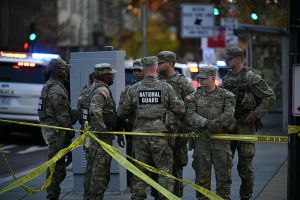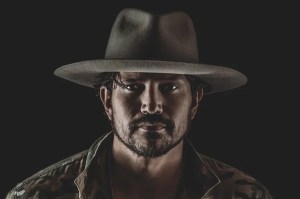On July 28, 1932, the United States military attacked its own veterans.
The desperate former soldiers, who had survived the horrors of World War One, had dug in for months in Washington, DC to get the bonuses that had been promised to them by Uncle Sam. Yet instead of paying the money they were entitled to, the Hoover administration dispatched General Douglas McArthur, who led against them four troops of cavalry, four companies of infantry, a machine gun squadron, and six tanks.
Ninety years after the infamous attack on the Bonus Marchers, dozens of veterans camped out on the steps of the Capitol building for several days. These veterans were not routed, thankfully. Taking advantage of social media, strong public opinion, a celebrity megaphone (Jon Stewart), and decades of honed public advocacy skills, they left with what they came for: the biggest expansion of veterans’ health care in recent memory.
The PACT Act, which Joe Biden signed into law, identifies more than twenty illnesses tied to wartime toxic exposures, mostly due to (but not limited to) the burn pits that were used by the US military in Iraq and Afghanistan. These burn pits were used to torch waste as well as plastic and rubber items, which emitted toxins into the air. Bottom line: if a veteran was stationed in Afghanistan and/or the Middle East during the Gulf War and post-9/11 eras, and is now suffering from one or more of these named illnesses — everything from brain cancer to chronic bronchitis — he is eligible for full health and disability compensation. The number of presumptive illnesses connected to Vietnam War-era service is also expanded in the PACT Act.
“I’m feeling damn proud,” says Rosie Torres, who, along with her husband, Army veteran LeRoy Torres, started BurnPits 360 to get help for burn pit injuries. LeRoy Torres was long ago diagnosed with constrictive bronchiolitis. He’s gotten his care, but he and Rosie have been fighting for the 80 percent of veterans (out of nearly 13,000 claims) who have been denied benefits up until now because their illnesses could not be officially connected to their service.
“My husband always says stay humble, but you know what? We did this,” she said in an interview. “We did it with the veterans and their families impacted. We organized and mobilized America. We made history and to know it took us sleeping on the steps of the Capitol, I’m so proud of that.”
Beginning in the mid-2000s, the fight for burn pits recognition was strictly word-of-mouth, on veterans’ blogs and in service organizations like IAVA (Iraq and Afghanistan Veterans of America). It seeped into news coverage in places such as the Military Times and in features by this writer at the American Conservative.
By the end of the decade, Congress was paying attention. It banned the practice of burn pits at the giant forward operating bases in Iraq and Afghanistan. But by then it was too late (and for years the practice never really stopped). The tens of thousands of troops who had been cycled in and out of the war zone, sucking in the air from tens of thousands of tons of garbage burned unfiltered in those pits, had been changed forever.
Vets were coming home and finding they were unable to breathe, while others were diagnosed with — and even died from — rare cancers. The Biden family believes burn pits are behind the death of the president’s eldest son, Beau. The military and VA, in those early years, and until recently, largely denied the connection of toxins to the injuries. Because there were myriad cancers and different lung illnesses, it was easy to kick the can down the road. A VA registry was established in 2014 for veterans to log their illnesses, but it guaranteed no benefits.
Tom Porter, a veteran and executive vice president of government affairs at IAVA, says that when IAVA joined with some 30 other advocacy groups to put pressure on the system in 2018, they began to get bipartisan traction on Capitol Hill. But it was still a slog.
“It went beyond post-9/11 veterans. It reached out to Persian Gulf and Vietnam veterans at a level that never existed before. We wouldn’t give up,” Porter said.
As a result, according to Porter, “this [PACT Act] is the largest and most ambitious modern health care legislation ever passed, bigger than any veteran legislation that I’ve ever seen, period.”
So what does that mean for veterans? There are over 350,000 vets logged into the VA registry today but advocates say the new legislation could bring in some three million new claims and patients. According to one report, some 780,000 veterans have filed a claim for respiratory conditions since the start of the war on terror in 2001; 43,000 have filed claims for cancer.
For its part, the VA says it is ready. By the time Biden signed the bill, the VA website already had a set of FAQs and was encouraging veterans to start filing.
“We’ll bring generations of new vets into VA health care and increase the health care benefits of many more,” VA secretary Denis McDonough said last month during a speech before the American Legion’s national convention. The agency says it will begin to process claims on January 1.
Given the history of the VA health care system, with its very public challenges involving claims backlogs, wait times, and personnel scandals (which include shoddy care and cover-ups), veterans and their families are clear-eyed about how this will develop.
“Just because the PACT Act was passed, we should not be patting ourselves on the back like we have solved all the other systemic issues in veterans’ healthcare,” said one vet who spoke on background.
“We still have the ongoing failures of the VA insofar as their delays and denials of coverage and treating veterans who are trying to get care for their service-connected injuries like they are just getting their driver’s licenses renewed at the DMV.”
Advocates point to a spike in claims after Agent Orange coverage was expanded in 2011. Those new claims added to the tens of thousands of new veterans returning from the war with complex injuries and mental health needs, and it swamped the system. At one point in 2012, there were over 860,000 backlogged disability claims, with 228,000 of them pending for a year or more. The VA seemed to do everything to avoid the bad publicity — even fudging the numbers and getting caught.
Covid struck in 2020 and the numbers spiked again, with veterans waiting for upwards of forty days to get an appointment. Though the VA has largely clawed its way out of that backlog, the Government Accountability Office (GAO) said in August that the agency “didn’t always follow leading practices for effective reforms, like establishing goals and implementation plans.” In other words, their systems are still slow and they haven’t fully modernized.
Concerned Veterans for America is supportive of the community care option, which allows vets who face long wait times and live far enough from a VA health care facility to access private doctors. Earlier this summer, the VA said that 44 percent of vets now access private care under new options put into place in 2019. Some Republican lawmakers want to increase private access even more, while critics warn against “privatizing” at the expense of improving the VA system.
The jury is still out whether the community care model saves the government money and is better for vets (though there is an acknowledgement on both sides that rural patients benefit from the alternatives). As for Porter and Torres, they say their groups plan to help as well as keep an eye on the process.
“I think we have to stay on the VA in regards to the implementation and oversight,” said Torres. “That pressure can only come from the veterans community.”

























